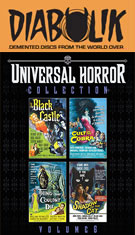
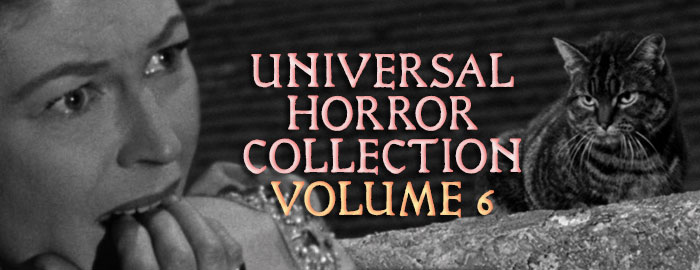
THE BLACK CASTLE
B&W, 1952, 81 mins. 34 secs.
Directed by Nathan Juran
Starring Boris Karloff, Richard Greene, Stephen McNally, Rita Corday, Lon Chaney Jr., John Hoyt
Scream Factory (Blu-ray) (US RA HD), Universal (DVD) (US R1 NTSC)
CULT OF THE COBRA
B&W, 1955, 79 mins. 59 secs.
Directed by Francis D. Lyon
Starring Faith Domergue, Richard Long,
Scream Factory (Blu-ray) (US RA HD), Universal (DVD) (US R1 NTSC) / WS (1.85:1) (16:9)
THE THING THAT COULDN'T DIE
B&W, 1958, 69 mins. 18 secs.
Directed by Will Cowan
Starring William Reynolds, Andra Martin, Carolyn Kearney, Peggy Converse, Charles Horvath
Scream Factory (Blu-ray) (US RA HD) / WS (1.85:1) (16:9)
THE SHADOW OF THE CAT
B&W, 1961, 78 mins. 42 sec.
Directed by John Gilling
Starring André Morell, Barbara Shelley, William Lucas, Freda Jackson, Conrad Phillips, Catherine Lacey
Scream Factory (Blu-ray) (US RA HD) / WS (1.66:1) (16:9), Final Cut (DVD) (UK R2 PAL)
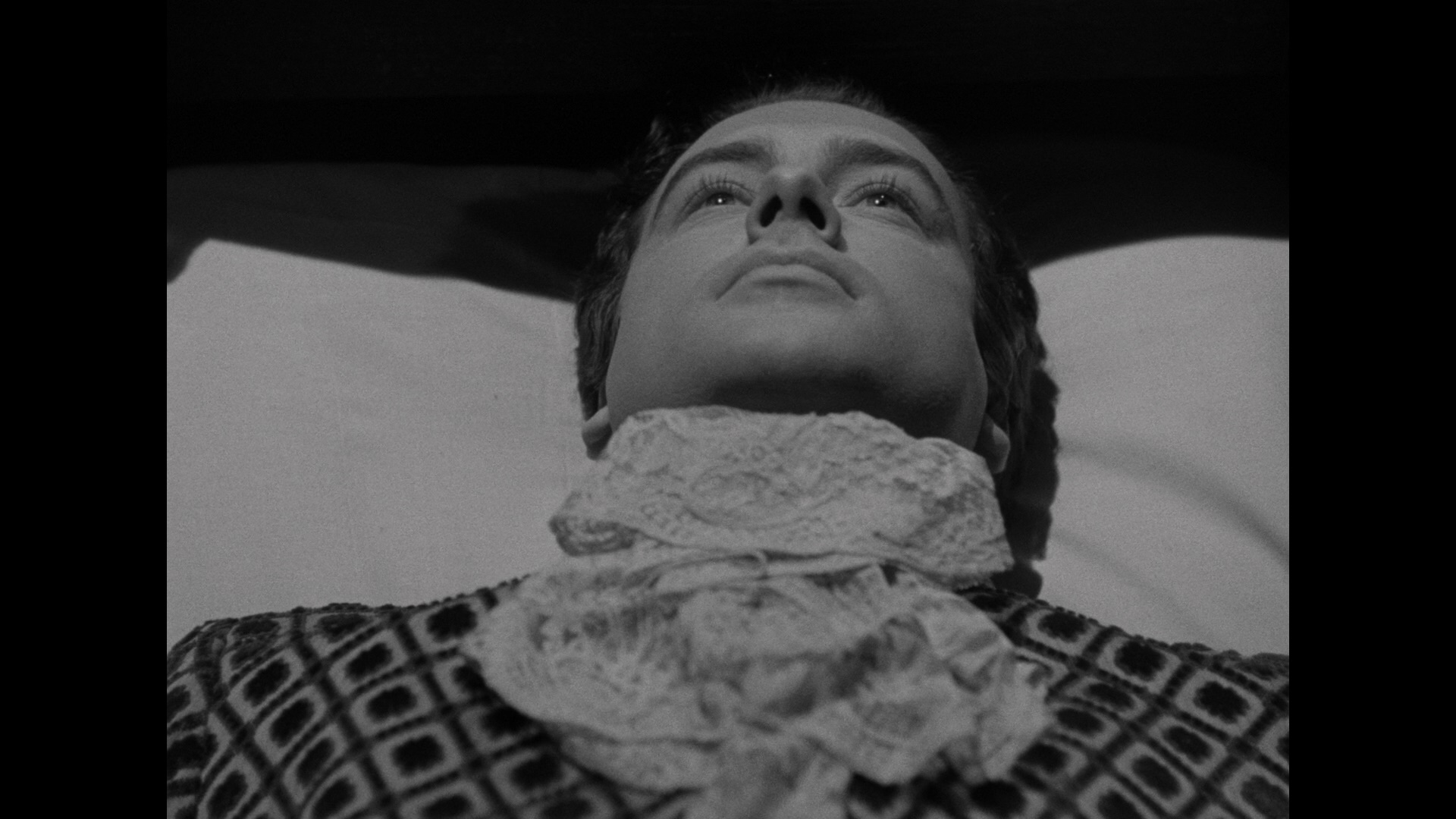 the sixth and apparently final excursion
the sixth and apparently final excursion 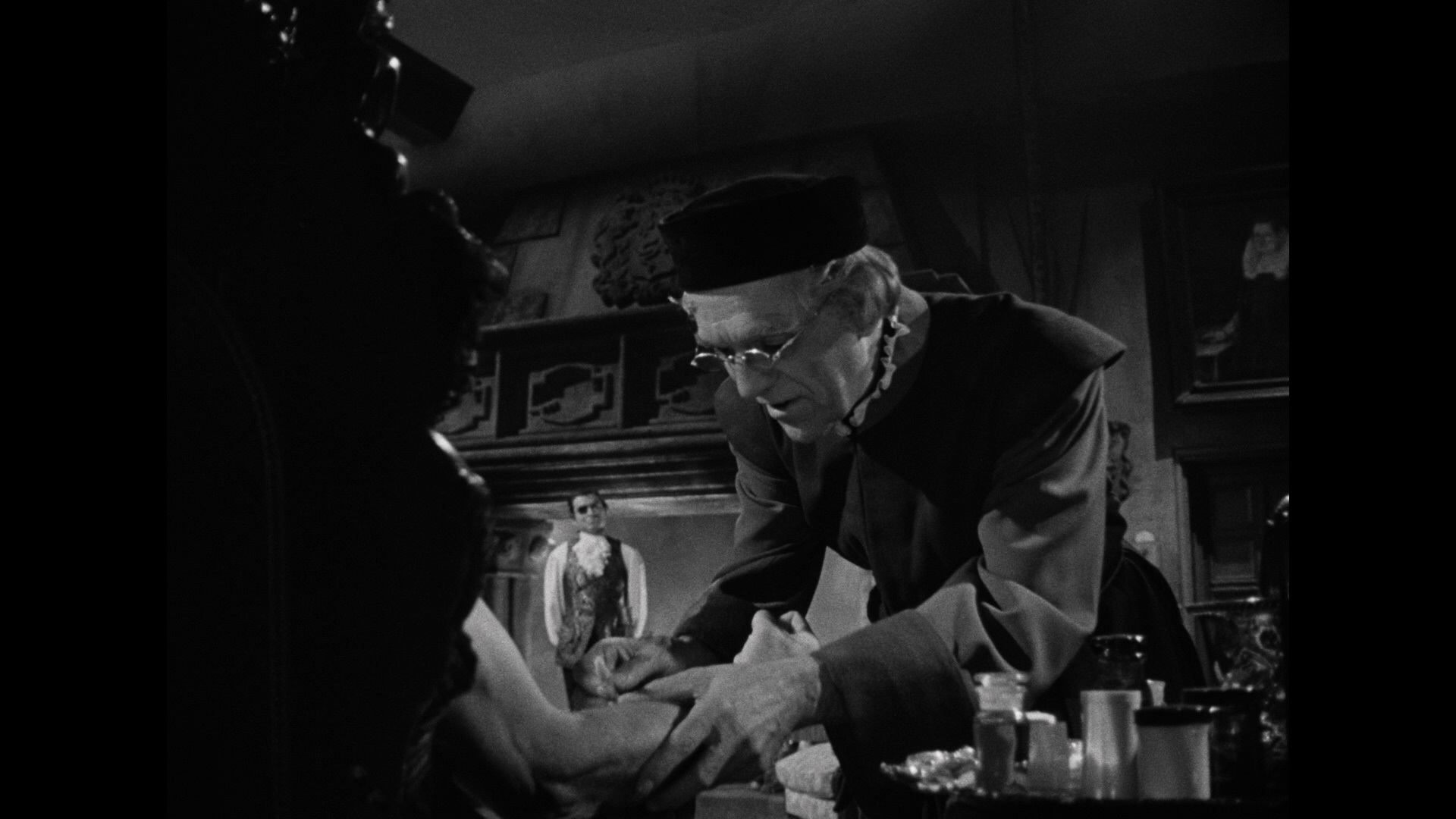 in its line of very welcome box sets of Universal horror classics, Scream Factory takes a hard left turn away from the prior batch of jungle-themed monster movies. This time there's no unifying theme per se apart from the fact that all of these came out between 1952-1961 and have flown somewhat under the radar on home video to varying degrees. One title in particular is going to be a big draw for a lot of horror fans and seemed unlikely to ever get the Blu-ray treatment according to prior reports, but more on that in a moment...
in its line of very welcome box sets of Universal horror classics, Scream Factory takes a hard left turn away from the prior batch of jungle-themed monster movies. This time there's no unifying theme per se apart from the fact that all of these came out between 1952-1961 and have flown somewhat under the radar on home video to varying degrees. One title in particular is going to be a big draw for a lot of horror fans and seemed unlikely to ever get the Blu-ray treatment according to prior reports, but more on that in a moment...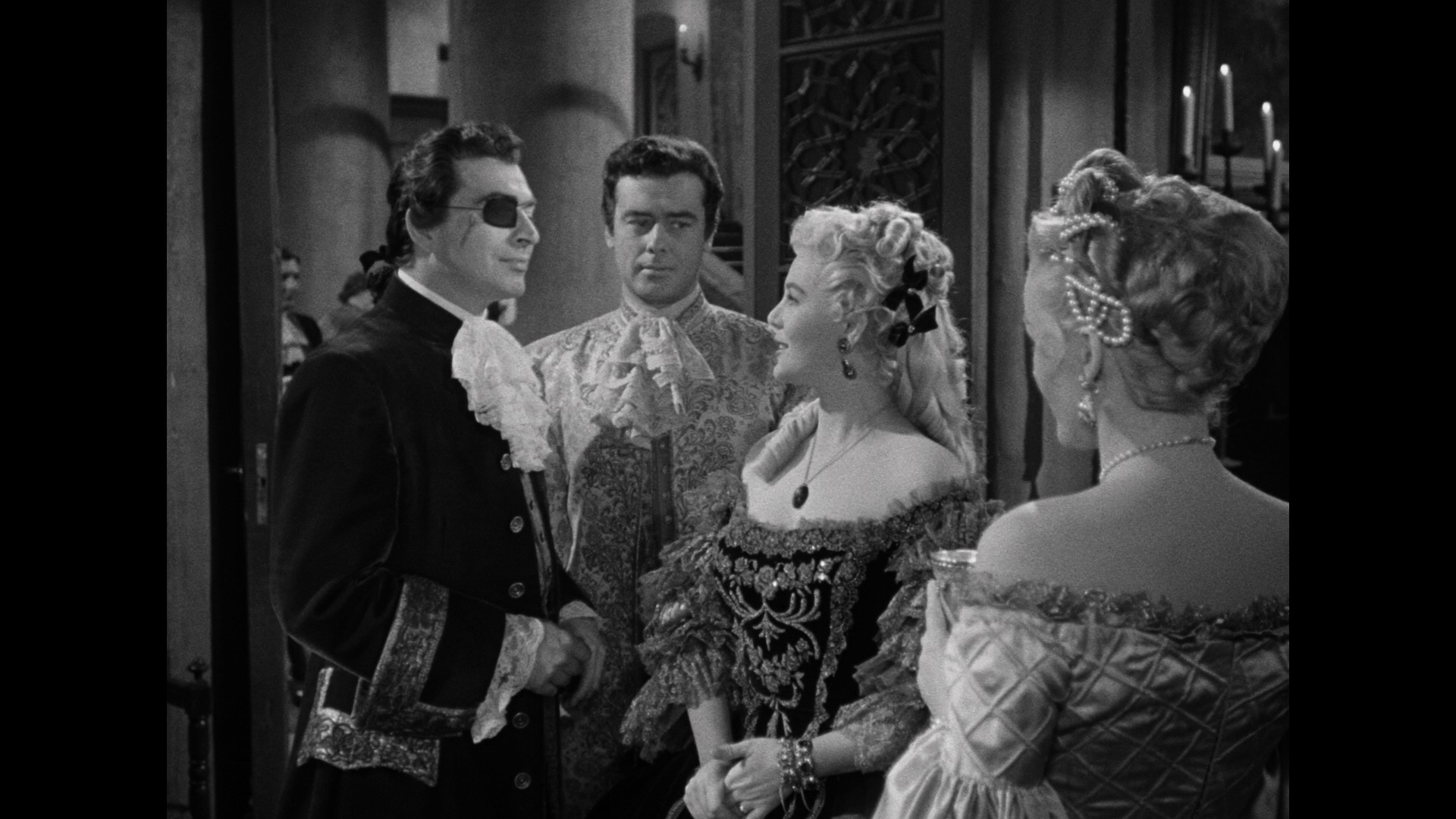 finds a potential ally in the Count's victimized wife, Elga (Corday), but bringing the villain to justice could cost him his life.
finds a potential ally in the Count's victimized wife, Elga (Corday), but bringing the villain to justice could cost him his life. 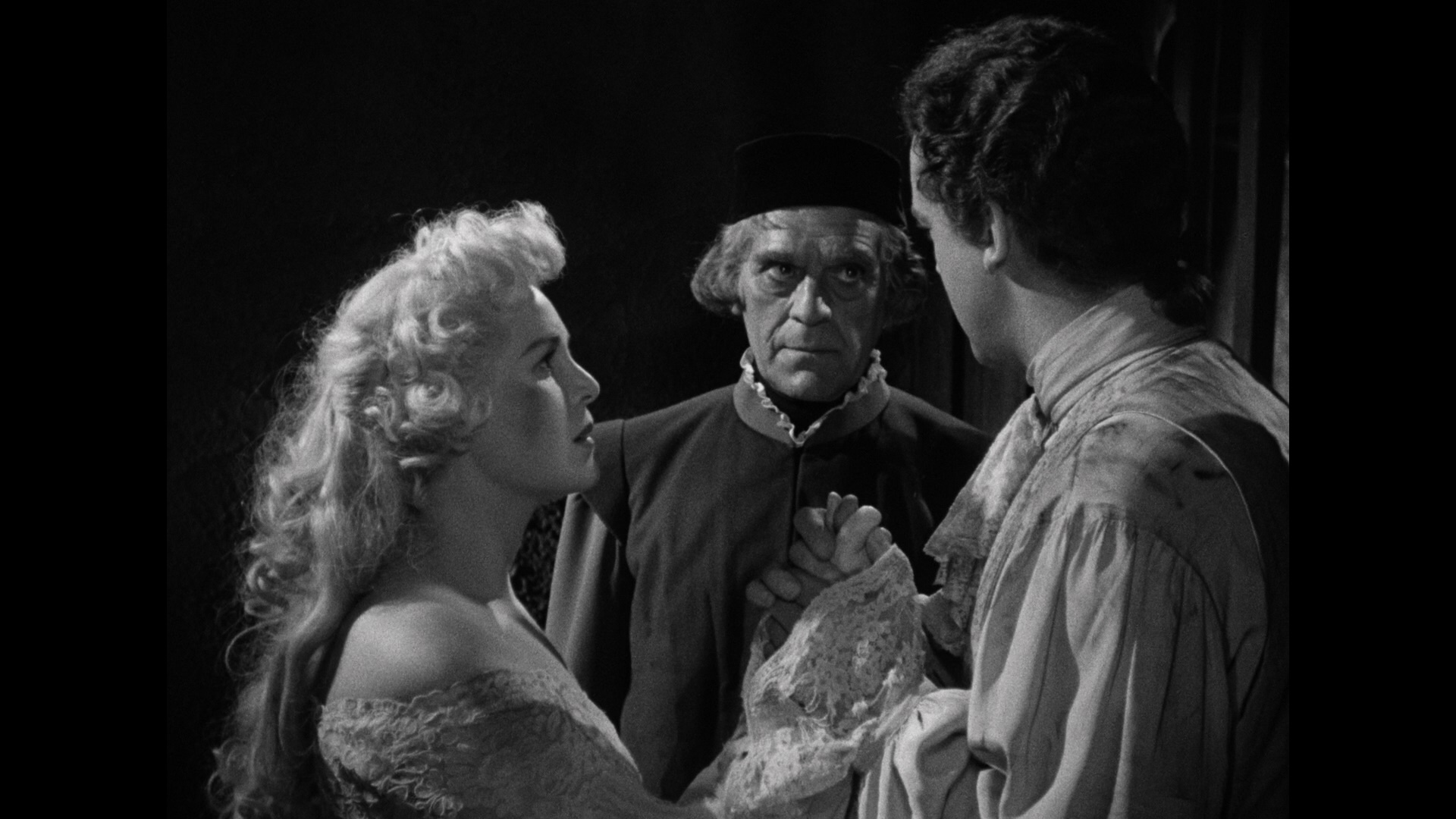 is a diverting slice of dark melodrama with plenty of visual style and some nice suspense and thrills paying off in the final stretch. Fans of Karloff and particularly Chaney will only get some modest time with the actors here as neither one could be called a lead by any stretch, but the real stars acquit themselves well and even engage in some rough and tumble sword fights doing many of their own stunts. Solidifying its credentials in the Universal horror canon, the film also makes prominent use of some very familiar music themes from prior monster favorites, which is really charming if your ears are attuned to spotting familiar tracks like this.
is a diverting slice of dark melodrama with plenty of visual style and some nice suspense and thrills paying off in the final stretch. Fans of Karloff and particularly Chaney will only get some modest time with the actors here as neither one could be called a lead by any stretch, but the real stars acquit themselves well and even engage in some rough and tumble sword fights doing many of their own stunts. Solidifying its credentials in the Universal horror canon, the film also makes prominent use of some very familiar music themes from prior monster favorites, which is really charming if your ears are attuned to spotting familiar tracks like this. 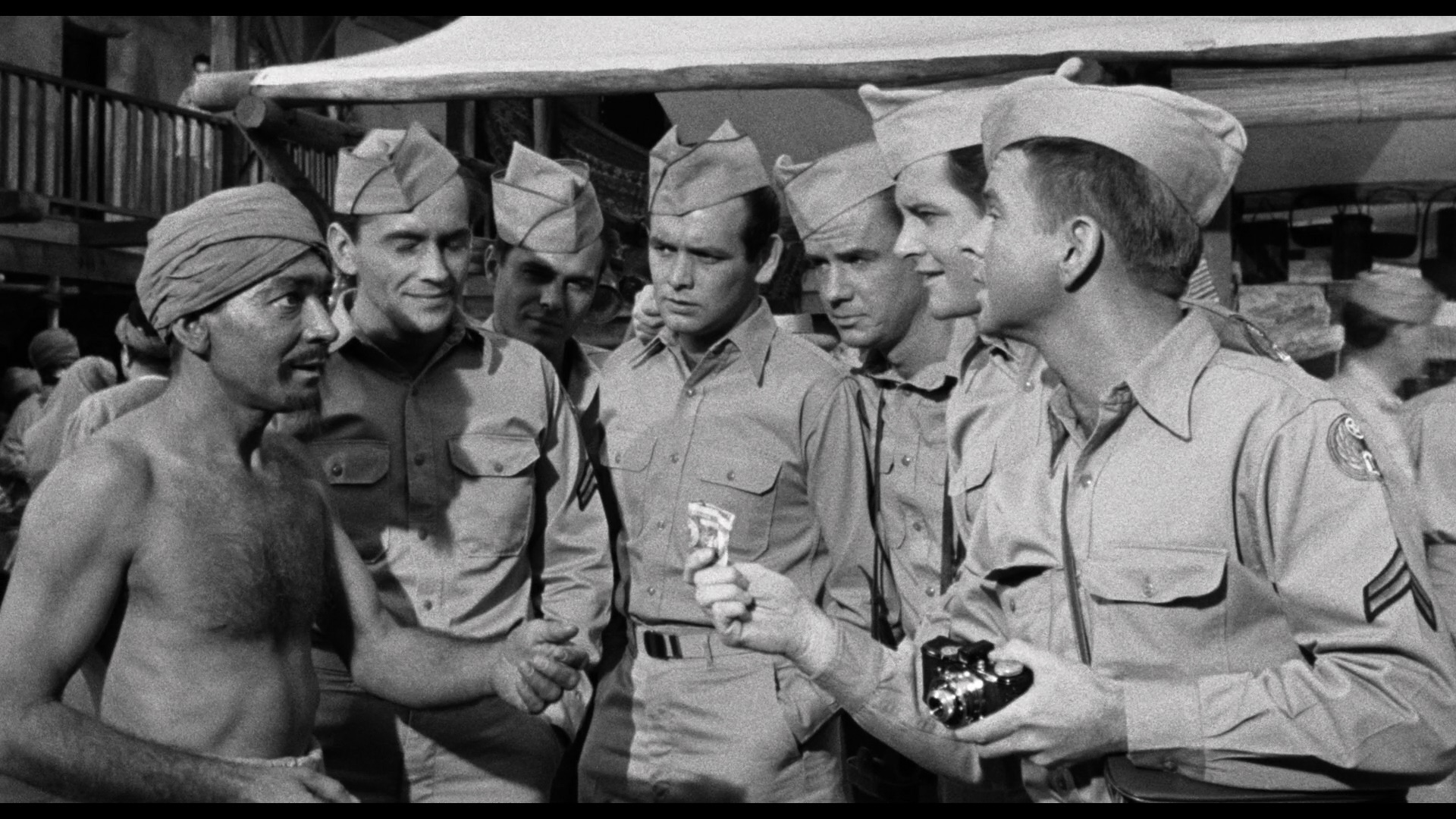 around talking in sparse rooms" approach that would typify some of its sci-fi films as well. That's not a negative though as that approach could also provide lots of pulpy
around talking in sparse rooms" approach that would typify some of its sci-fi films as well. That's not a negative though as that approach could also provide lots of pulpy 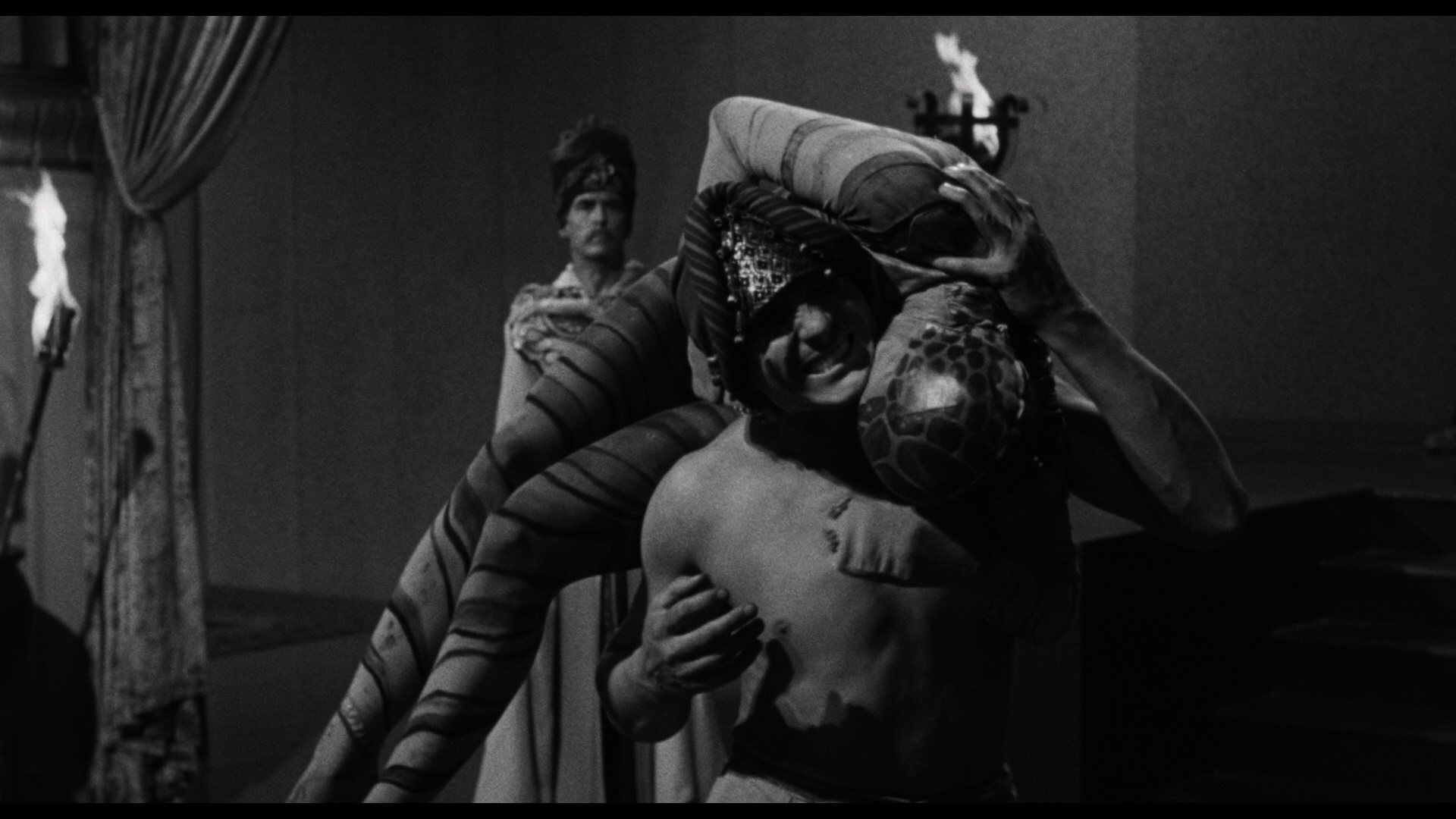 fun with some genuinely oddball plot concepts. For proof, look no further than the next two chronological films in the set starting with Cult of the Cobra, a fascinating little study in domestic anxieties about men who had come home from war and were hitting speed bumps assimilating into society, not to mention a bit of xenophobia when they ended up marrying women from abroad. Of course, you can overlook that subtext if you prefer and just enjoy a fast-paced body count chiller with an unusual approach to its monster material. Paired up on its initial release with Revenge of the Creature, it was also the lone genre entry from prolific TV director Francis D. Lyon for the studio and provides an opportunity to see a young David Janssen (as an ill-fated bowling alley owner) long before he hit it big with The Fugitive.
fun with some genuinely oddball plot concepts. For proof, look no further than the next two chronological films in the set starting with Cult of the Cobra, a fascinating little study in domestic anxieties about men who had come home from war and were hitting speed bumps assimilating into society, not to mention a bit of xenophobia when they ended up marrying women from abroad. Of course, you can overlook that subtext if you prefer and just enjoy a fast-paced body count chiller with an unusual approach to its monster material. Paired up on its initial release with Revenge of the Creature, it was also the lone genre entry from prolific TV director Francis D. Lyon for the studio and provides an opportunity to see a young David Janssen (as an ill-fated bowling alley owner) long before he hit it big with The Fugitive.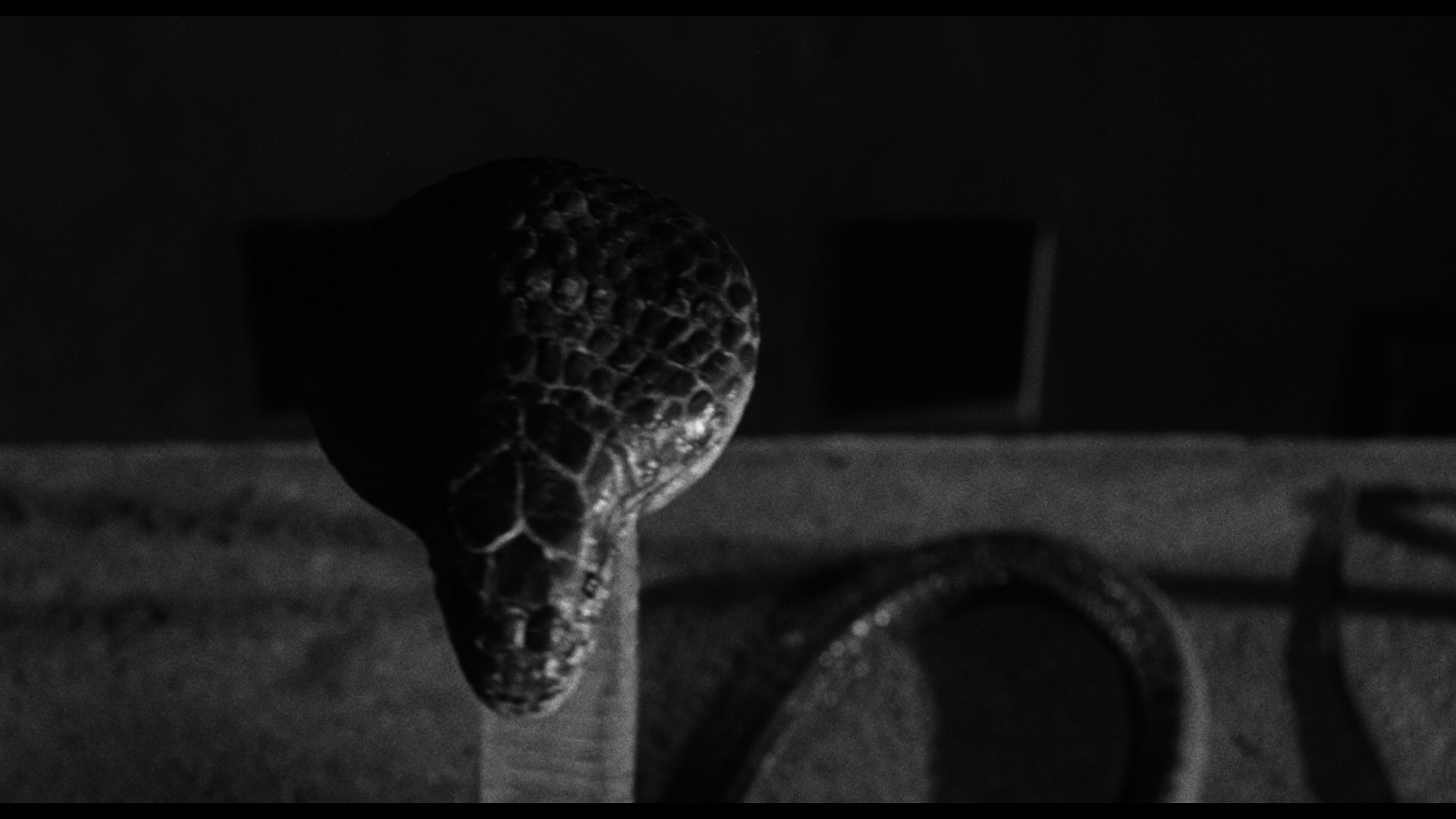 little at the end to imperil its lone "good girl" played by Kathleen Hughes. The fact that the men are all deeply unsympathetic (even ostensible leading man Richard Long, a familiar face from everything ranging from The Twilight Zone to House on Haunted Hill) makes things even more interesting as a kind of commentary about entitled behavior and its extreme consequences. Not to be overlooked is the film's use of nifty distorted POV shots during the stalking sequences, a tactic employed in Universal's earlier It Came from Outer Space and just as effective here.
little at the end to imperil its lone "good girl" played by Kathleen Hughes. The fact that the men are all deeply unsympathetic (even ostensible leading man Richard Long, a familiar face from everything ranging from The Twilight Zone to House on Haunted Hill) makes things even more interesting as a kind of commentary about entitled behavior and its extreme consequences. Not to be overlooked is the film's use of nifty distorted POV shots during the stalking sequences, a tactic employed in Universal's earlier It Came from Outer Space and just as effective here. 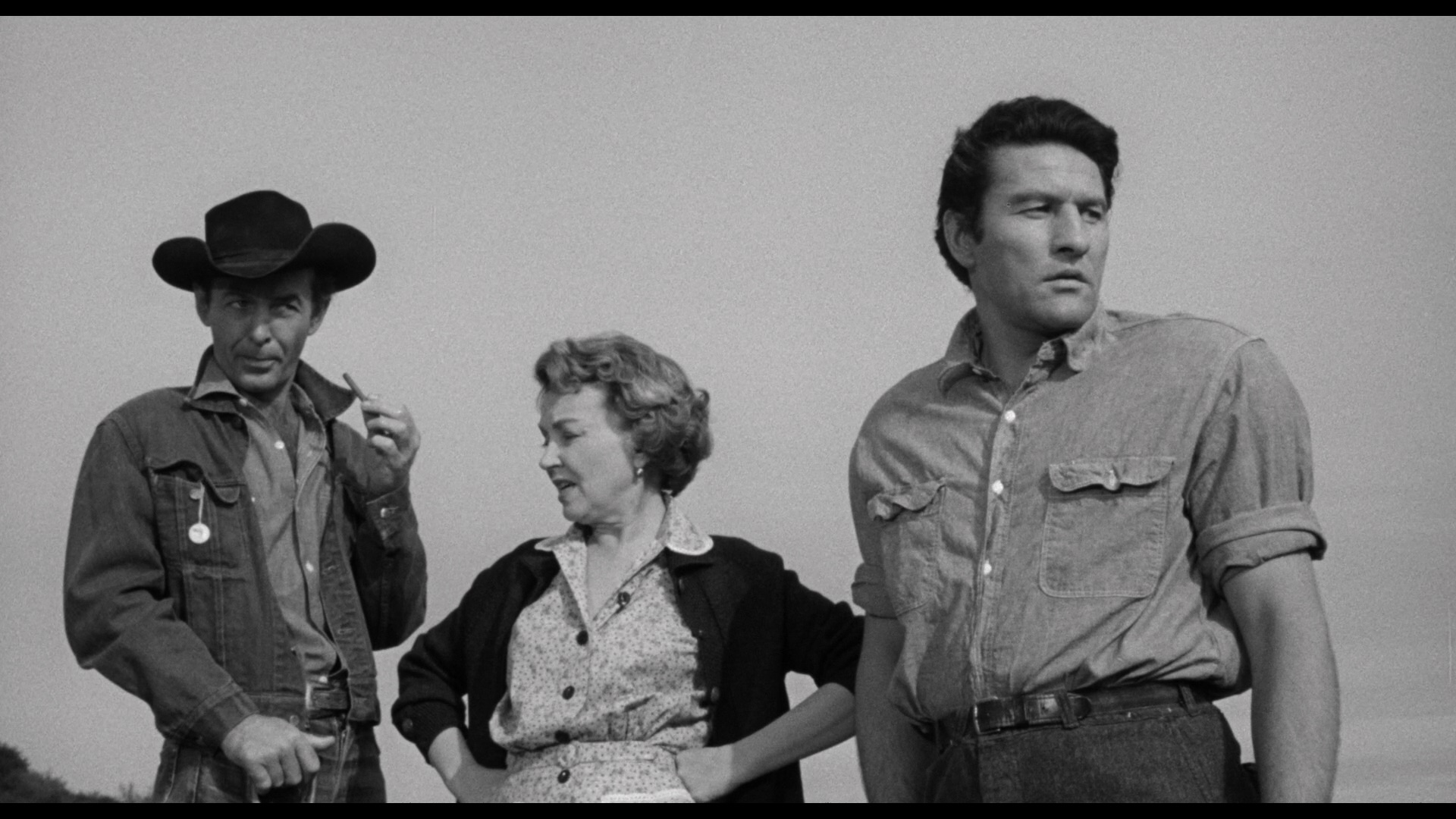 For film three we turn to that singularly odd genre hybrid, the horror western, which became sort of a thing with titles like 1956's The
For film three we turn to that singularly odd genre hybrid, the horror western, which became sort of a thing with titles like 1956's The 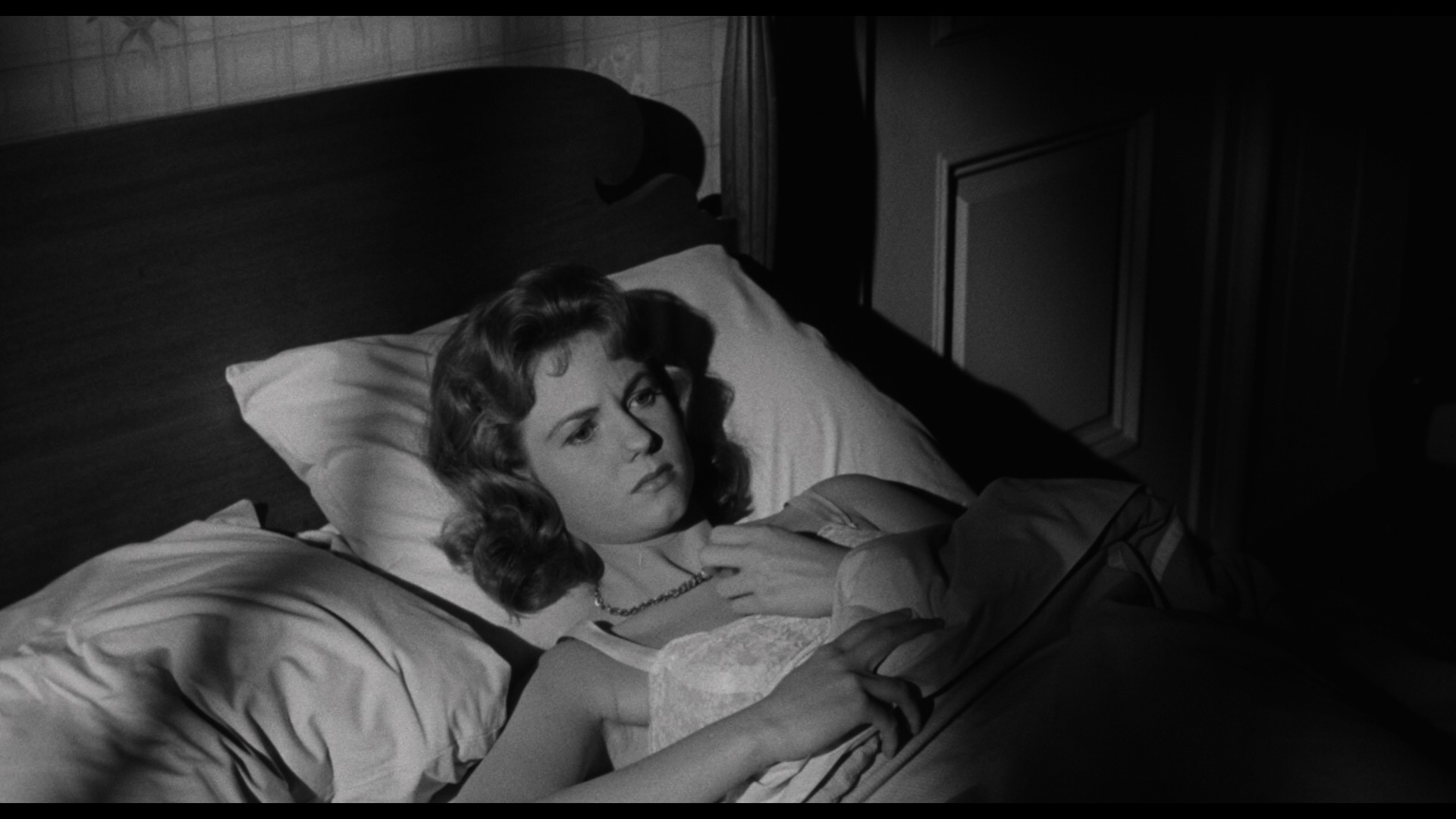 Beast of Hollow Mountain, 1959's Curse of the Undead, and 1966's Billy the Kid Versus Dracula. Shot on an insanely low budget, The Thing That Couldn't Die featured a very catchy theatrical poster and managed to fill out multi-fllm programs well enough to leave a strong impression on monster kids who kept it close to their hearts even when it became very difficult to see for many years.
Beast of Hollow Mountain, 1959's Curse of the Undead, and 1966's Billy the Kid Versus Dracula. Shot on an insanely low budget, The Thing That Couldn't Die featured a very catchy theatrical poster and managed to fill out multi-fllm programs well enough to leave a strong impression on monster kids who kept it close to their hearts even when it became very difficult to see for many years. 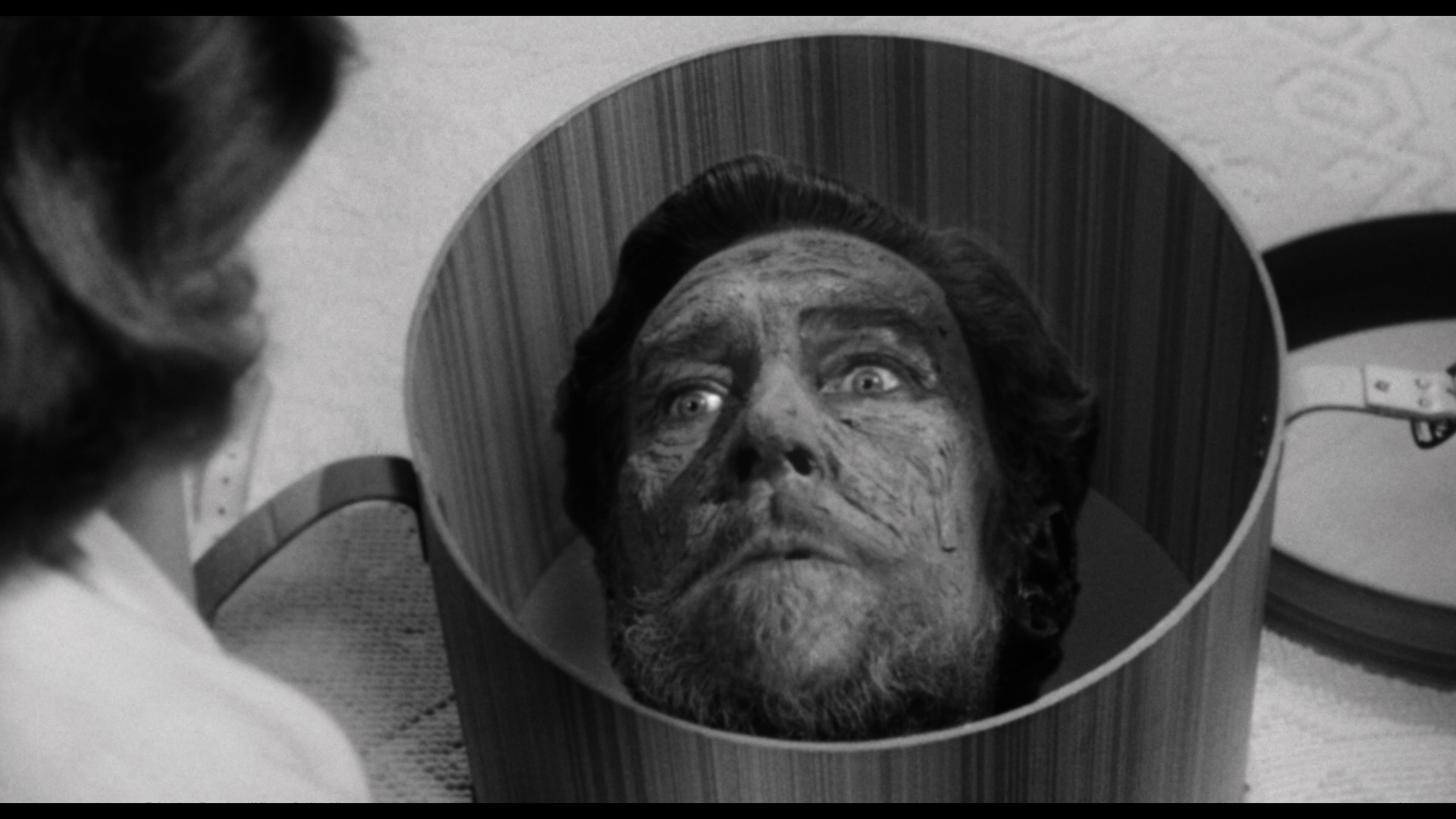 o-nonsense
o-nonsense 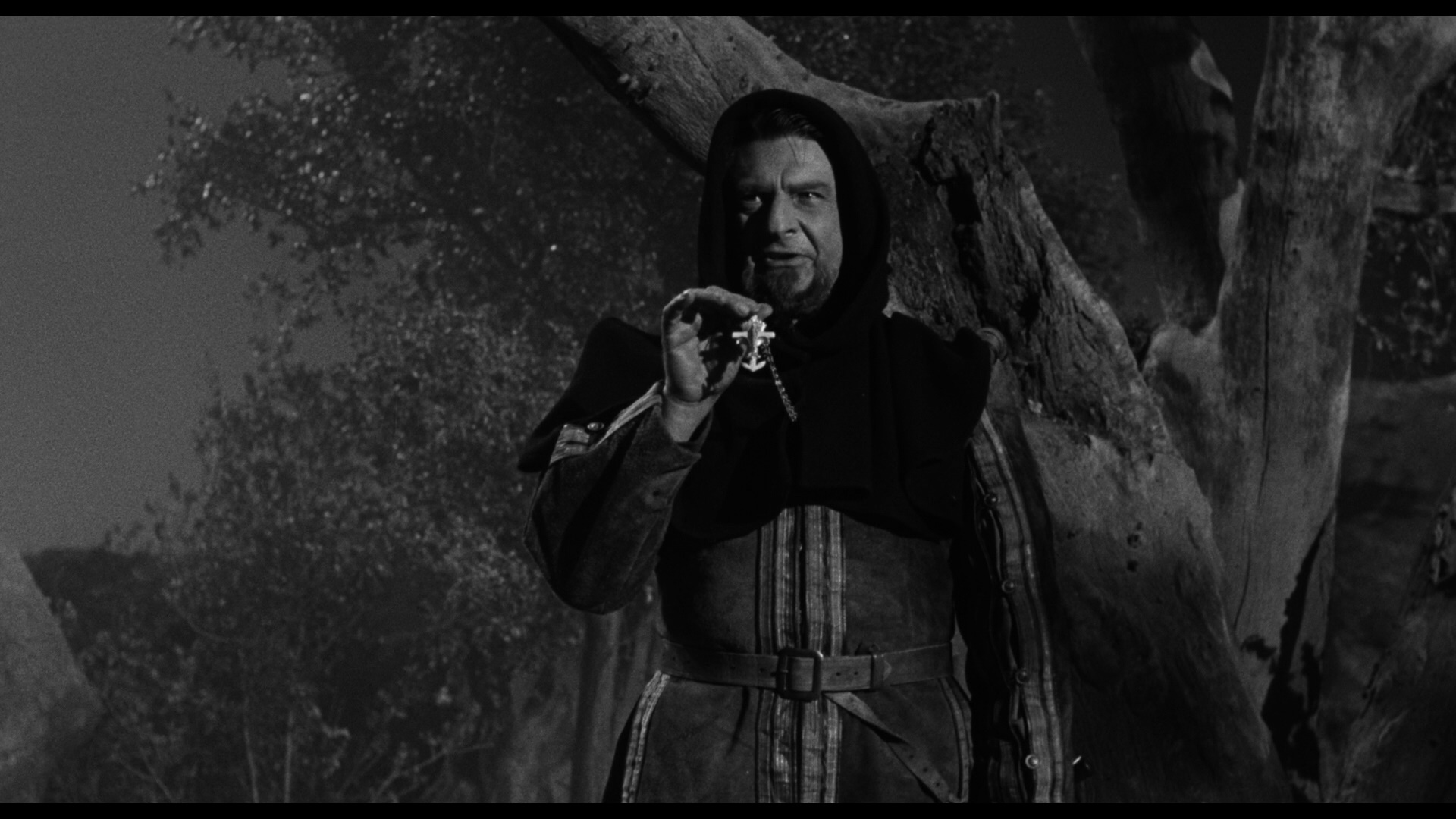 climax that slams the door right after its biggest shock.
climax that slams the door right after its biggest shock. 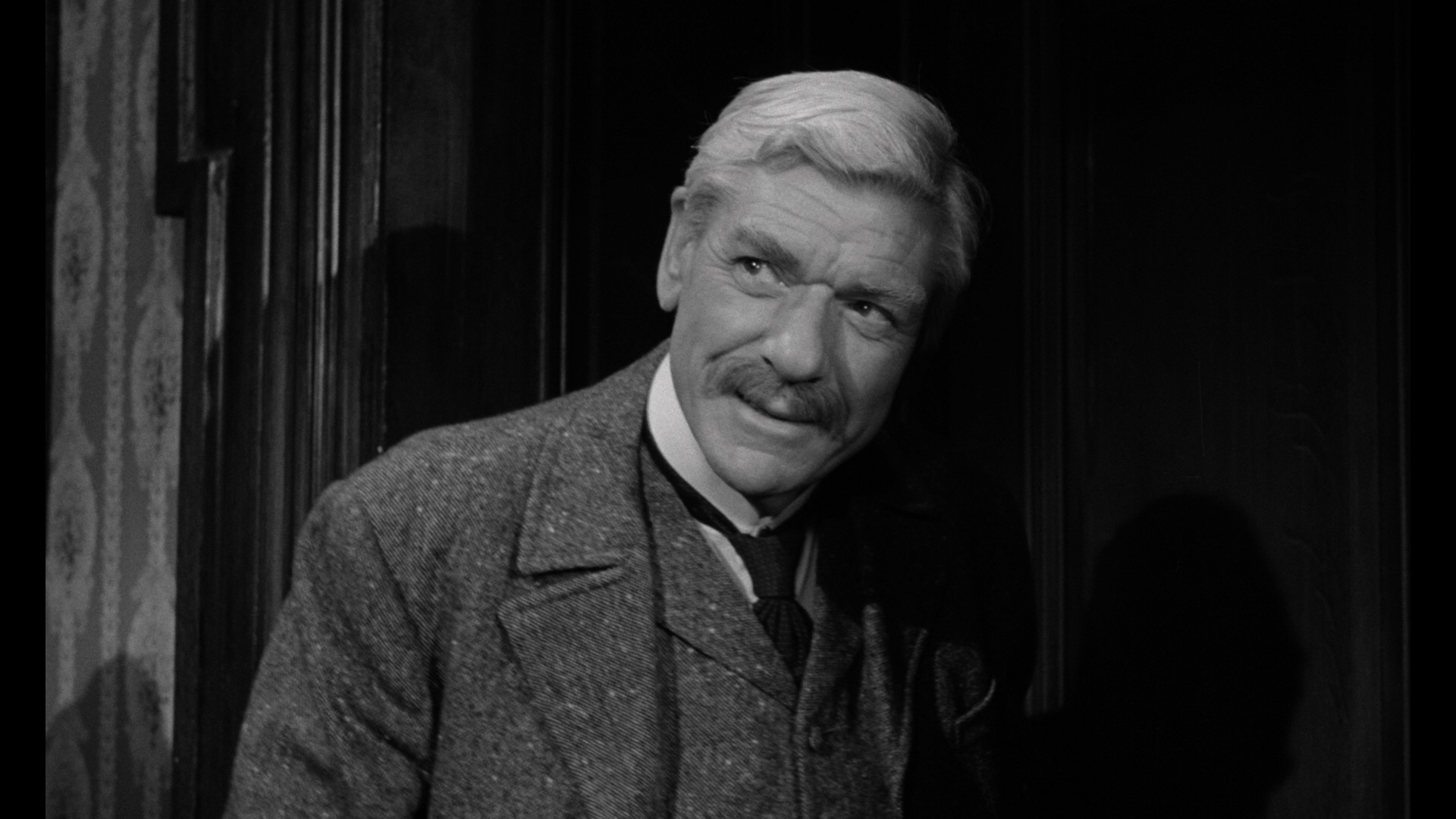 horror film that was never actually credited as such. Shot at Bray Studios with a cast of familiar faces including Hammer vets André Morell
horror film that was never actually credited as such. Shot at Bray Studios with a cast of familiar faces including Hammer vets André Morell 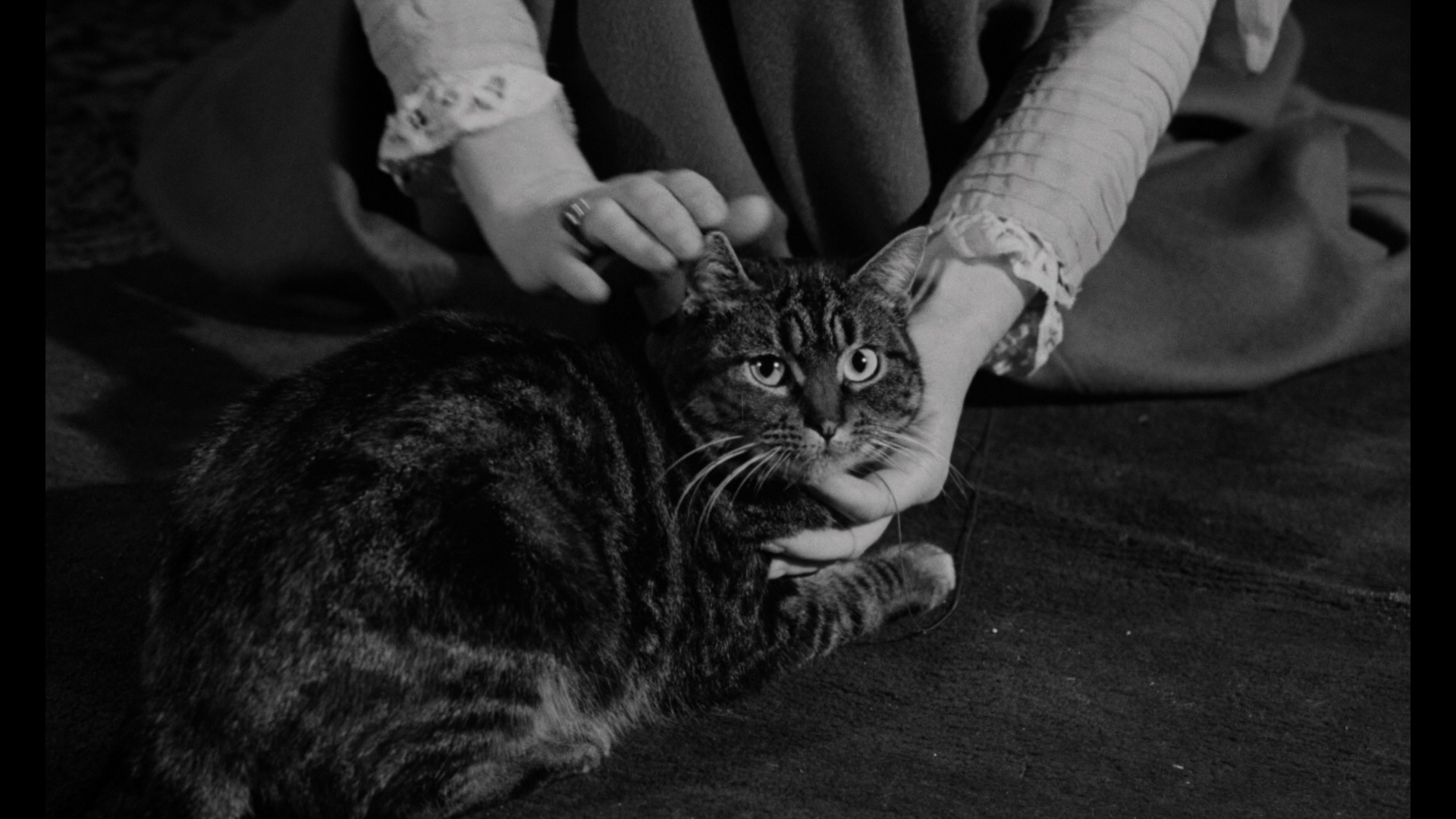 (The Hound of the Baskervilles) and Barbara Shelley (Dracula, Prince of Darkness), it's a highly entertaining body count film as well as a key installment in the strain of genre films that try to paint cats as frightening even though they're actually being heroic. (See also, Eye of the Cat and The Uncanny.) This one's been on people's wish lists for a long time, steadfastly refusing to turn up on home video in any form until a mediocre 2014 British DVD from Final Cut Entertainment (cropped on the sides to 1.33:1) with word circulating that existing elements would make a Blu-ray release highly unlikely. (At least that release featured a nice stills gallery, a trailer, a worthwhile "Shadow Play: Inside The Shadow of the Cat" 25m37s featurette with Alan Barnes, Marcus Hearn, Denis Merle, Jason Morell, and Jonathan Rigby, and a "Catastrophy" 3m49s audio interview with special effects assistant Ian Scoones.) That means the Scream Factory release is a pretty big deal, finally showing the film off in pristine condition in its intended 1.66:1 aspect ratio and allowing us to really appreciate its beautiful Gothic visuals for the first time in decades.
(The Hound of the Baskervilles) and Barbara Shelley (Dracula, Prince of Darkness), it's a highly entertaining body count film as well as a key installment in the strain of genre films that try to paint cats as frightening even though they're actually being heroic. (See also, Eye of the Cat and The Uncanny.) This one's been on people's wish lists for a long time, steadfastly refusing to turn up on home video in any form until a mediocre 2014 British DVD from Final Cut Entertainment (cropped on the sides to 1.33:1) with word circulating that existing elements would make a Blu-ray release highly unlikely. (At least that release featured a nice stills gallery, a trailer, a worthwhile "Shadow Play: Inside The Shadow of the Cat" 25m37s featurette with Alan Barnes, Marcus Hearn, Denis Merle, Jason Morell, and Jonathan Rigby, and a "Catastrophy" 3m49s audio interview with special effects assistant Ian Scoones.) That means the Scream Factory release is a pretty big deal, finally showing the film off in pristine condition in its intended 1.66:1 aspect ratio and allowing us to really appreciate its beautiful Gothic visuals for the first time in decades. 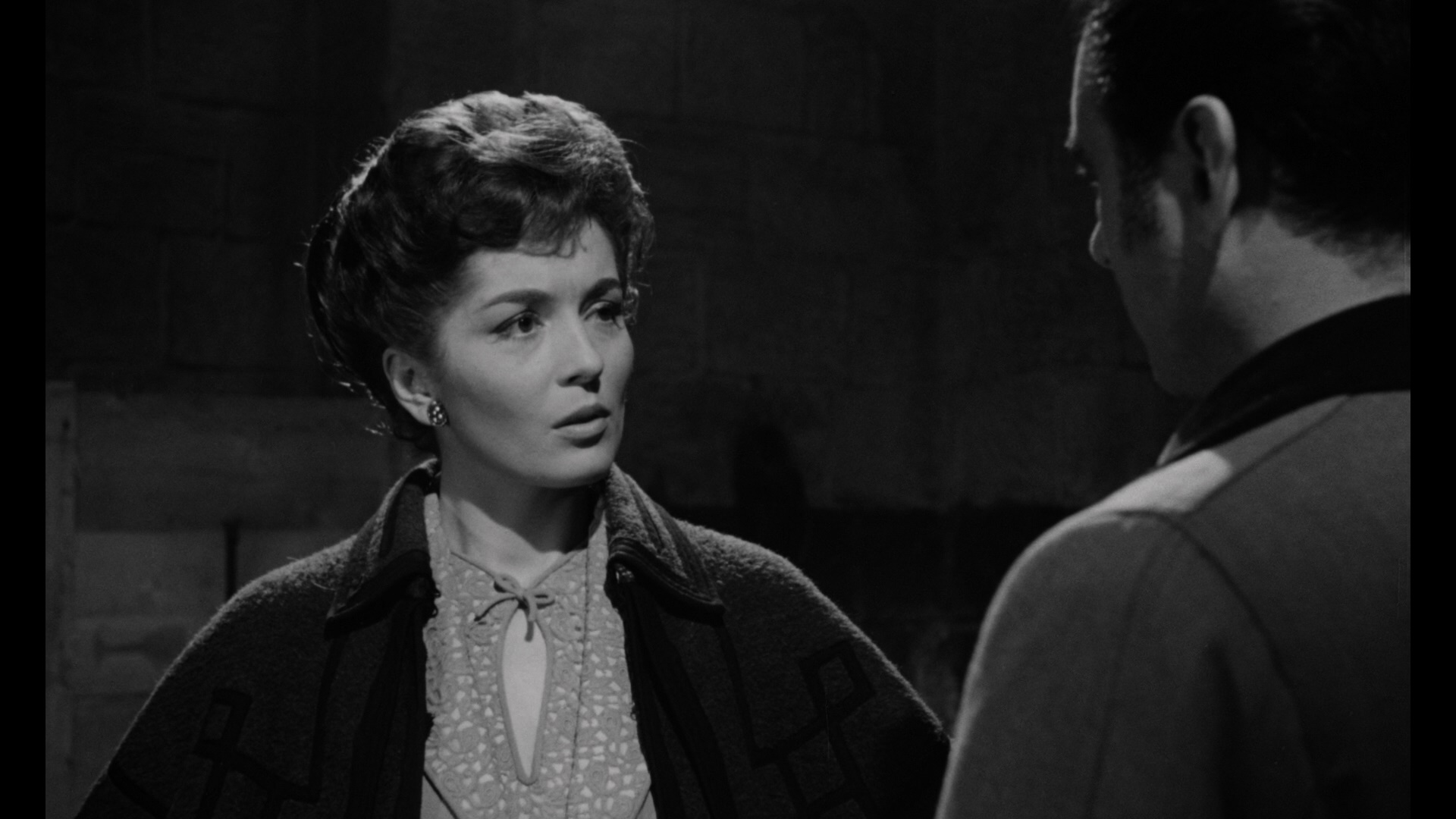 persistent presence drives the criminals to increasingly desperate and ultimately fatal
persistent presence drives the criminals to increasingly desperate and ultimately fatal 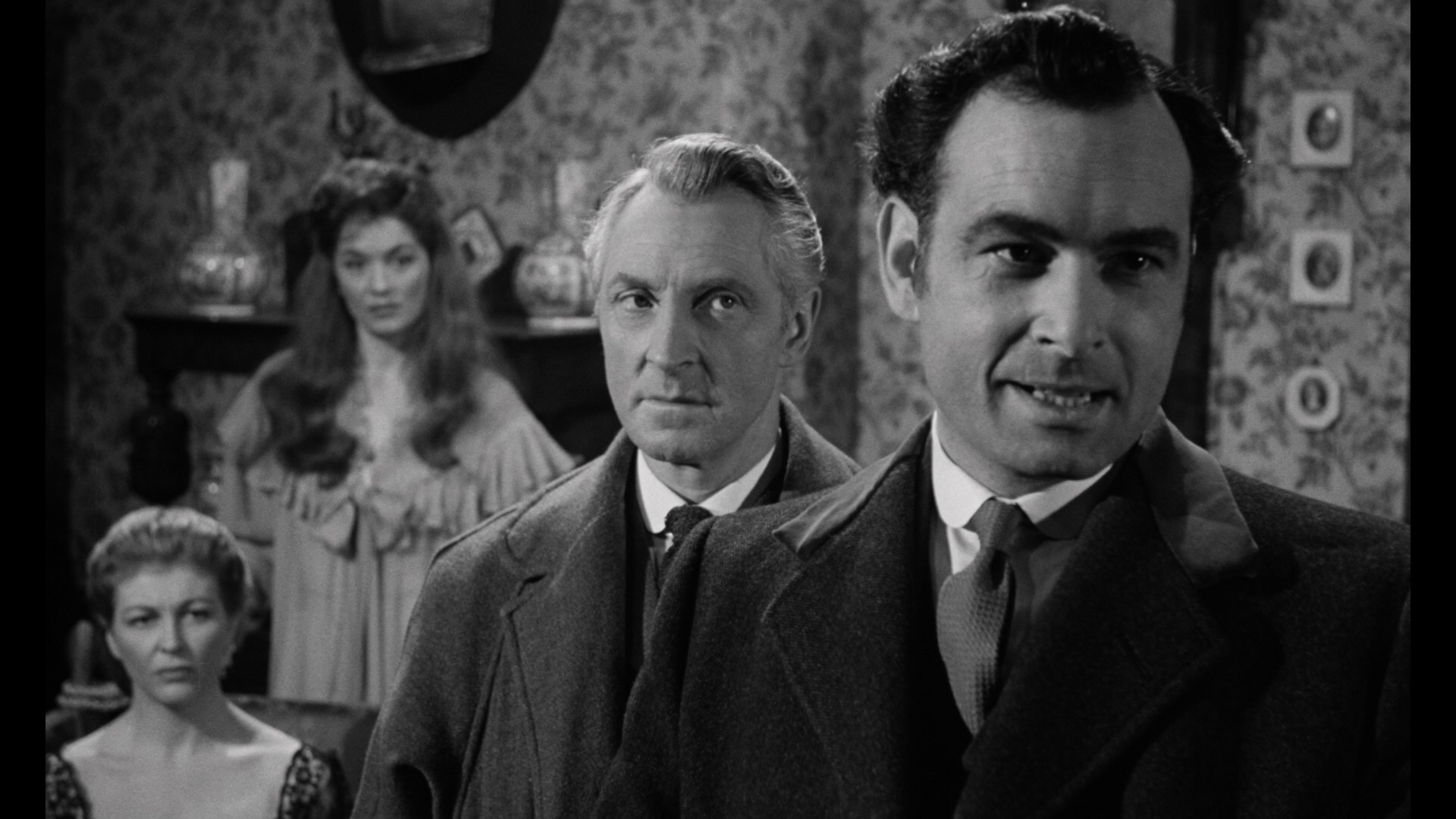 behavior.
behavior.